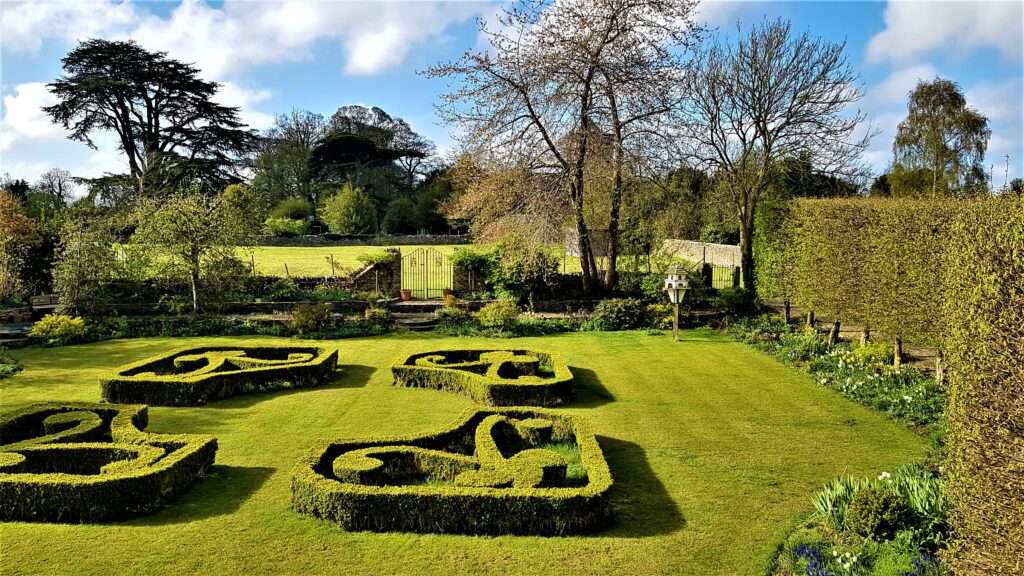I’ve already written about the places in Oxfordshire and the Cotswolds that we travelled to and from while staying in Kirtlington but have decided to summarise our ten-day holiday base into one blog post.
As we drove through the gateway I was charmed by the grounds of the holiday let we rented. Arranged in an ornamental design, it features a knot garden of trimmed hedges central in a lawn framed with vibrant flowerbeds. A dovecote overlooks the peaceful scene, and I knew from that moment our break at Stoke House Annexe would be ideal.
Across a field at the back, a church spire rises behind trees. Intrigued and eager to explore, we dropped off our luggage and went for a quick look around.
Our first evening’s stroll led us through the vegetable patch, past beehives and the chicken run. We were in for a treat, as we had noticed freshly laid eggs left for us in the fridge alongside locally squeezed apple juice.
To the left, we came across Kirtlington Park, giving access to the Oxfordshire Way and more local walks. Shadows were growing longer but there was just enough time before it became dark to walk through the graveyard to the church.
The next day the owner of our holiday abode explained. “It’s an interesting little church and worth going inside,” but we never imagined how much so, until we returned to St. Mary The Virgin.
A wooden Anglo-Saxon church was thought to have been built on the original site of today’s stone one. Much of the architecture has unique features indicating ancient and symbolic designs which over the years must have witnessed all sorts of fascinating events. I was amazed to learn, that in the 10th century the church was visited by King Alfred the Great’s great-grandson who held council there with his lords and bishops. And what about the thirty-six skeletons discovered in 2008 when water pipes were being laid. Good heavens!
Glass cabinets display interesting items and impart details about the notable Dashwood Family who moved to a mansion in Kirtlington mid-18th century, funded church alterations and other parish necessities. I had wondered about the name after seeing that one of the village’s public houses is called the Dashwood Arms. But most poignant of all is a ledger memorial stone commemorating the life of a black slave, Blackamoore, a member of their household.
On a lighter note, there’s a plan of the churchyard’s flowers, trees and shrubs and another board advising of St Mary’s Living Churchyard Project showing wildlife illustrations. There’s much to take in for such a compact spot and the setting tranquil.
We dined out mostly, so didn’t eat in the Dashwood Arms or Oxford Arms, although both looked appealing. One evening though, we ordered a takeaway from the Oxford Arms via FaceBook. The pork dish was delicious, fine quality and good value.
We never did get around to rambling along the Oxfordshire Way, but we did enjoy a saunter beside the Oxford Canal. Reached from the opposite end of the village, I stopped to take photographs of the honey-coloured buildings on the way, but if you’ve been reading my blog posts, you’ll know all about that.
Until next time,
Sue. X
